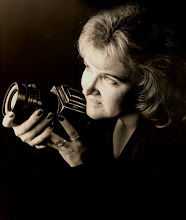We all know how video contributes to the entertainment industry. Movies can make people laugh, cry, scream and yes, even learn. It used to be that “learning” movies were only found on Public Broadcasting Stations (PBS). Nowadays the quality of those educational videos has changed with the times. Multiple channels now exist for the mere purpose of learning. Home and garden, food networks, and history channels are just a few of the varieties of learning channels that are geared toward the recliner learner. With their feet up, snacks nearby and a remote to surf the many channels, populations are gaining knowledge in their pajamas as filmmakers produce informative, engaging videos.
If the television wasn’t a sufficient medium for viewing the world’s content, the internet filled any existing need. You Tube brought a whole new way of sharing video content to the global community. With a simple upload anyone with video capturing capabilities can now be a producer of video content. As with all internet resources, content found on the world wide web needs to be viewed with discretion and reviewed for validity.
In the university setting, videos are an integral tool for many educators. Often a teaching concept is captured best through a visual medium such as video. Some classes are dedicated to the production of educational video content. In GED 575 - DVD Production, a Masters in Education elective course, students are paired up and given the assignment to create a final project video during the ten-week quarter. My class partner and I had an opportunity to work with the city of San Dimas to create an educational video dedicated to the topic of “properly planting trees.” The beginning process to our video production was scripting, storyboarding, and scouting . Next we used high-end professional video cameras, to capture multiple scenes on mini-DV tapes. Capturing and editing in
Apple’s Final Cut Pro, the many hours of video were cut down to nine minutes and fifty-nine seconds since a You Tube video posting must be under ten minutes.
“Trees Please” effectively conveyed the message of tree importance, city commitment, community involvement, and proper planting of trees.

With a successful video project and an “A” grade, my video partner and I were honored on March 10, 2009 during a City of San Dimas City Council meeting with a Certificate of Appreciate for the creation of “Trees Please” an educational video for the San Dimas Parks and Recreation Department. Local school children featured in the video production filled the audience with their proud parents who thanked us following the presentation for including their children in the city’s new educational content.
The video can also be found at sandimas.net.










